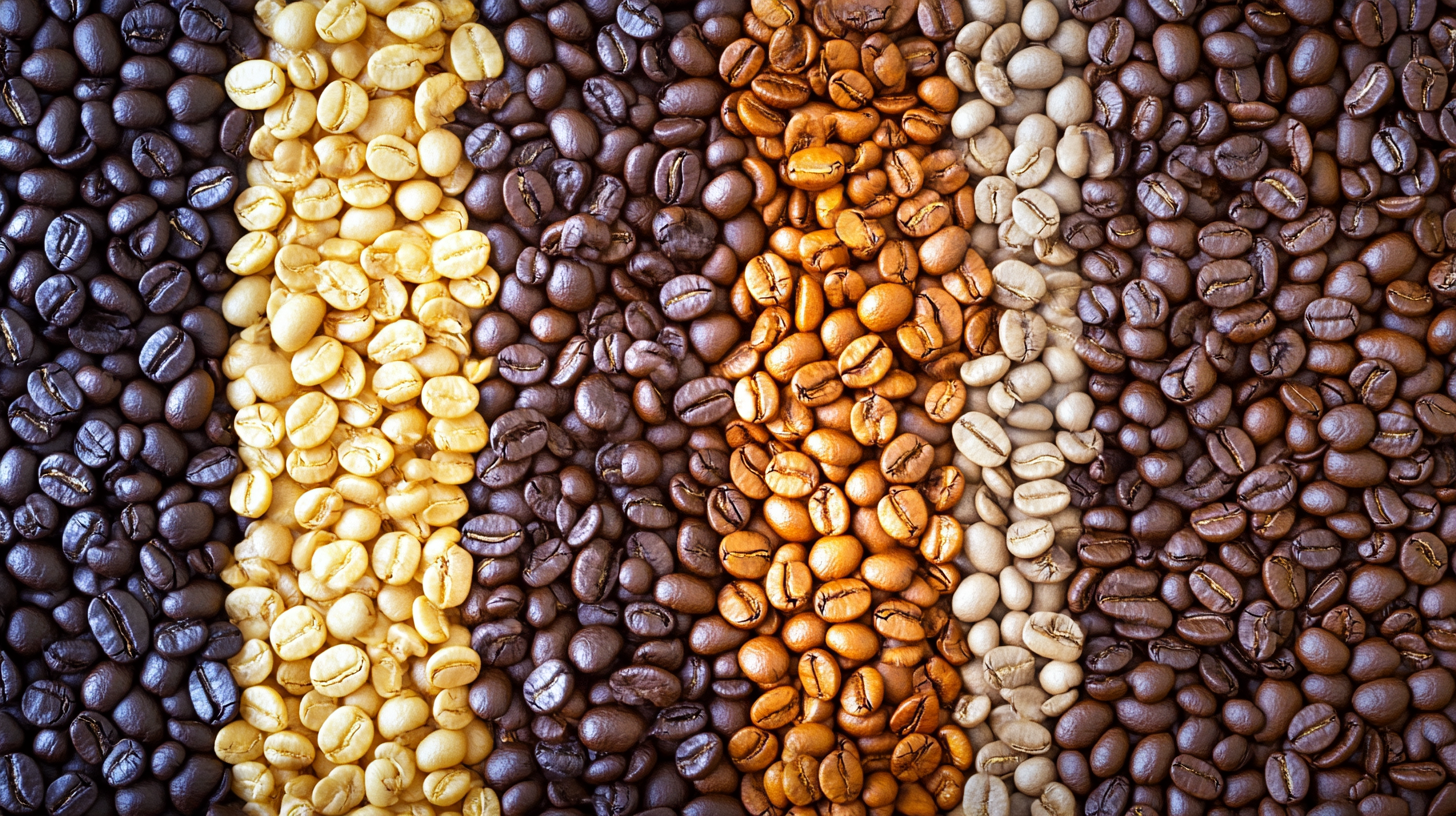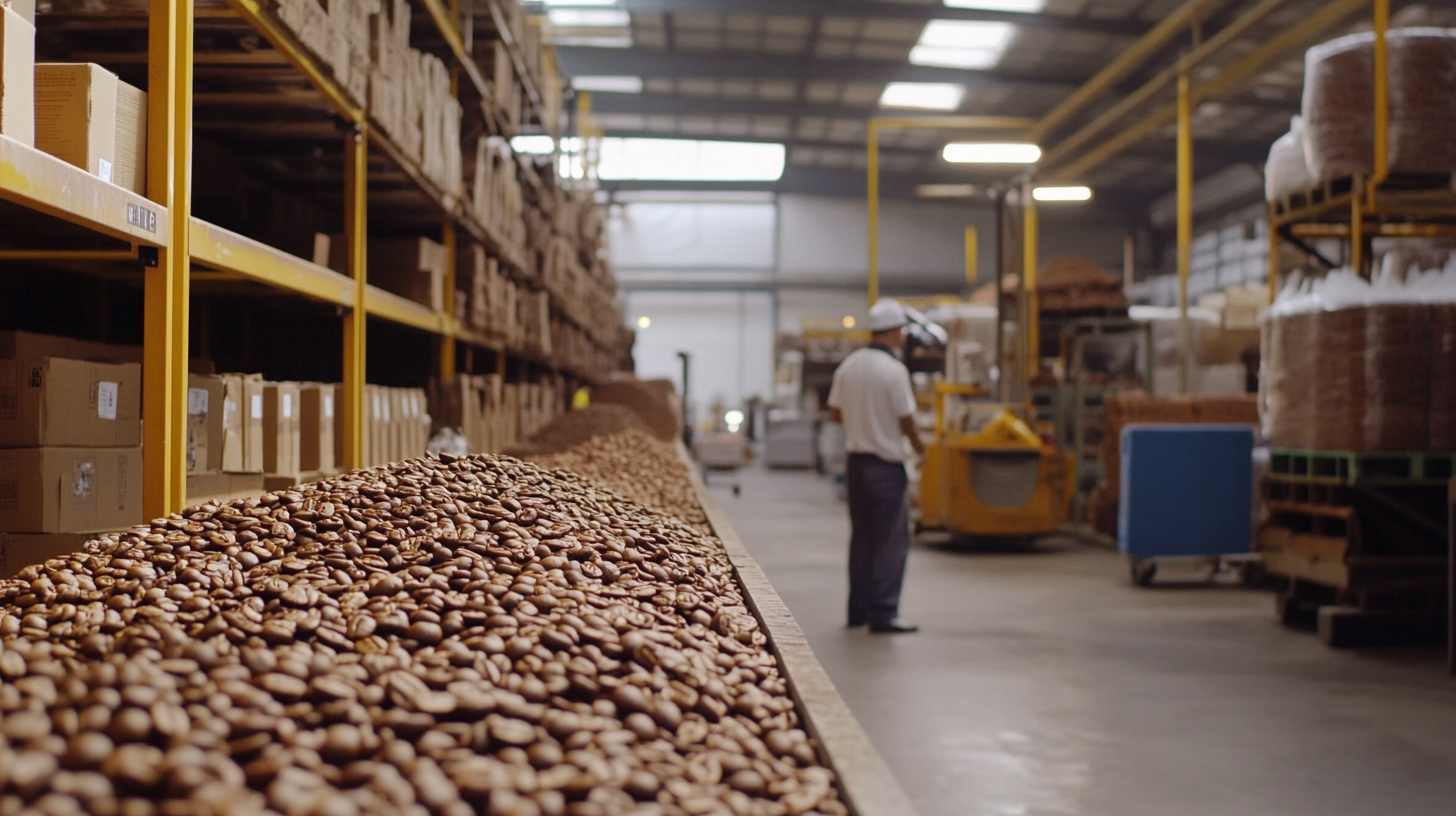Understanding the Quality Standards for Roasted Coffee in Global Supply Chains
As per October 2023, the market dynamics mean that quality standards for roasted coffee are becoming an important part of the equation for consumer satisfaction and competitiveness in the commodities market. Global consumption of coffee rose this year to 166.63 million 60-kilogram bags in 2021 and shows increasing demand for roasting coffee of different quality across several regions, as stated by the International Coffee Organization (ICO). However, consumers are becoming more discriminatory in high-quality preferences and tend toward special-quality coffees that espouse the values of sustainability and ethical sourcing practices. Therefore, knowing the intricate quality standards defined in the supply chain is a major prerequisite for producers and retailers alike if they are to survive in such a dynamic situation.
The Specialty Coffee Association also reports that about 40 percent of consumers are willing to pay a premium for certified-quality coffee. The point about roasting is intensively important; it underpins the correlation between the chemical factors of aroma, flavor, acidity, body, and aftertaste-the more these refer to overall coffee experience. Hence, the stakeholders in the coffee industry must start considering these quality standards more vigorously so as to achieve product consistency and fulfill the demanding palate of today's coffee consumer. By understanding and adopting these standards, various actors in the global roasted coffee supply chain can encourage sustainable development and cultivate long-term customer loyalty.

The Importance of Quality Standards in Roasted Coffee Supply Chains
The method used to roast coffee becomes a most important player's quality standard in the international coffee market for ensuring that consumers get a product as per their expectations concerning taste or sustainability. The Specialty Coffee Association (SCA) observes that more than 70% of the consumers are willing to pay a premium for high-quality coffee, which further emphasizes the importance placed on quality. The quality standards cover just about every conceivable aspect: the sourcing of raw beans, the roasting process, and post-harvest processing methods, each critical in the preservation of product integrity. The quality standards enhance the consumer experience, while also providing operational efficiencies down the supply chain. The International Coffee Organization (ICO) points out that rigorous quality measures could help decrease wastage by up to 30%, translating to savings for producers and suppliers alike. At the same time, traceability programs that are increasingly slipping into these quality standards help consumers navigate back to the origin of their coffees, allowing for more profound connections with brands that consider ethical sourcing and quality as their top priorities. In addition, the standard adherence to quality standards helps distinguish products in the increasingly competitive specialty coffee market. A recent study by Market Research Future stated that the specialty coffee market is set to grow at a CAGR of 11% from 2022 to 2028, predominantly due to consumer demand for quality. This trend emphasizes the need for solid quality standards that ensure consistency, reliability, and utmost satisfaction for roasted coffee products. Such a commitment will be ever more crucial as the industry moves forward for stakeholders who seek to prosper in the global coffee supply chain.

Key Quality Indicators for Roasted Coffee Beans in the Global Market
All the vital quality markers their relevance, just like producers, are also well versed by the consumers nowadays in roasted coffee across the globe. Roasted coffee beans are measured through aroma, flavor, and acidity, among other vital parameters that contribute to the total drinking experience. These quality indexes are essential for consumers looking for good quality coffee and are also vital for adherence to the international trading standards very much under a capitalized economy influenced by tariff policies and global market fluctuations.
As international markets get more interconnected, economic policies, say tariffs announced by big men such as Donald Trump, have a direct influence on coffee supply chains globally. High tariffs may modify the cost structure of coffee imports and exports, and consequently the related pricing and availability. This, therefore, means coffee producers, especially from developing countries, should always keep an eye on such changes and run with their strategies to remain on course in terms of pricing while not compromising quality. Quality standard institution should be very high so that in any flooded market where there are many products, the distinguishing factor is largely going to depend on reported quality indicators.
On the other hand, this collaborational aspect of firms like Nasdaq and Amazon Web Services on the way of getting better in market infrastructure indicates the趺ation of better days to come for the global supply chain. These innovations might help producers have a better track record in terms of quality indicators all through the supply chain, ranging from farm to roast, before that particular roasting of coffee reaches consumers. Technology and information use must be applied in such ways that, even as stakeholders seek the overall goal of having the same quality in their output, the differences caused by market dynamics and global economic policies are reconciled. This quality assurance and technology infusion will be very vital in making a strong entry into this dynamic emerging coffee market.

Impact of Quality Standards on Coffee Price and Consumer Behavior
The decaffeinated coffee market seems to be on an impressive global path toward reaching a value of $15 billion in 2024 and approximately $22 billion by 2032, reflecting a compound annual growth rate (CAGR) of 4.8% for the period. The increase is directly associated with changing norms of quality which influence the coffee pricing and consumption choices for potential customers. The older price-motivated consumers are gradually maturing into quality and authenticity seekers, thus creating greater challenges and opportunities for brands.
Such recent price revisions have been attributed to certain coffee retailers' contributions to increasing the idea of premium products in a competitive market even within the price wars. For instance, specific items of the certain chains have been covertly increased because of the idea that this is a value-added strategy to maintaining the ratio, because the companies don't expect their products to just be dramatically cut in price without consideration of quality. The intense competition has created a complex situation where price wars rage, not only on high-priced items such as automobiles but also in the coffee business. Aggressive price strategies recently initiated by retailers are already evident in the coffee industry.
Hence, the shift in value consideration and their meaning behind the things they purchase has taken significant time in this year 2023. Even though 2023 has remarkably recorded a surplus of low-priced items, the phenomenon has brought demands for fairer yet more intense consumption. This is the reason brands need to change their way of doing things around customer experience, which becomes synonymous with quality. It reminds these consumers that although price matters, coffee drinkers remain loyal primarily due to the quality of their brews and the integrity with which such brands go about their business in the long run of pricing.

The Role of Certifications in Ensuring Quality in Roasted Coffee
Coffee Supply Chain Certification ensures that the quality of the roasted coffee is intact. Consumer awareness about sustainability and quality standards is also growing day by day, and certifications maintain those standards for producers and roasters. The standards thus imply that the good should be sustained in terms of quality, and they also guarantee the consumer that what he/she is taking home must comply with some standards of environmentalism and ethicality.
A few brands have been putting in all the innovation possible, especially in terms of sustainability, all while complying with that certification. For instance, some companies are working together with environmental organizations to set up water compensation projects so that their coffee production is green. This is a step toward ameliorating local communities. Such examples illustrate how companies can marry these quality standards with truly sustainable practices, thus increasing their brand value and fulfilling consumer expectations.
Then, the other end for quality certification provides supply chains working transparently. From cultivation all the way to roasting, every step of the way is capacity-building for maximal fulfilling accountability, thus creating another avenue for trust and development of the sector between producers and consumers. As great evolution happens in the coffee market, the demand will only increase for quality roasted coffee as the competition intensifies; hence the significance of certifications grows.
Challenges Faced by Producers in Meeting Global Coffee Quality Standards
In recent years, the green coffee trade has encountered a number of challenges in maintaining global quality standards, particularly given the growing demand for decaffeinated coffee. The estimation for the market was $15 billion by 2024, with a predicted rise to $22 billion by 2032. Producers are therefore required to offer top-quality products that comply with international standards. Oftentimes, the demand for quality goes together with certain certifications and sustainability procedures proposed which impose severe restrictions on resource-scarce producers who may not be able to implement these procedures.
For many producers, especially the producers in developing regions, the transition to these standards will be a huge burden. Enhancing quality is further hindered by limited access to modern agricultural techniques, financing, and exposure to global markets. This, therefore, means that investment in regenerative agriculture should be given high priority-the industry leaders stress sustainability in keeping a foothold in this competitive coffee supply chain. While producers attempt to raise their standards, they constantly walk a tightrope powered by the demands of tradition versus modernization, all of which aim at enhancing the marketability of their products on the world stage.
Quality issues also draw attention to carbon emissions being considered more and more in the food sector, right after industry and transport. Amidst attempts to work through all quality assurance requirements, the coffee industry shall not forget its contribution to climate change. Sustainable production is to be required now not only to comply but also to ensure the future of coffee-playing a considerable share in the yet fast-growing area in China. Through creativity and potent partnerships, the producers may see in time a better chance of observing global quality standards and responding measurably to creating a sustainable coffee supply chain.


